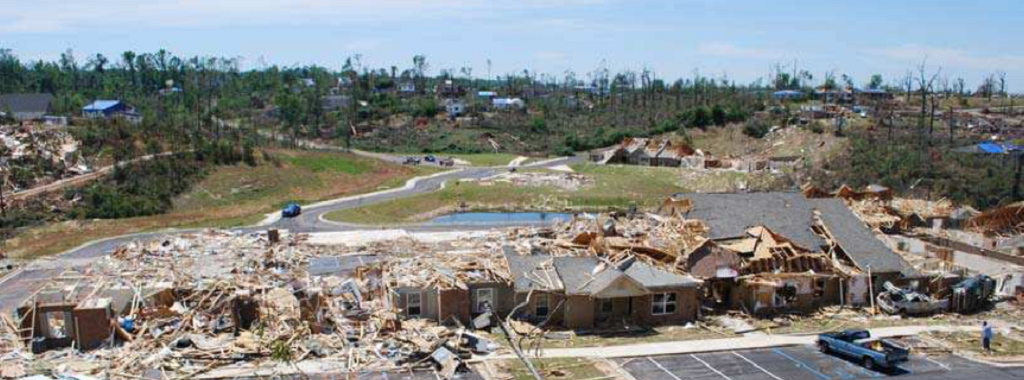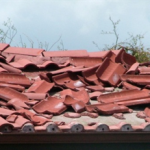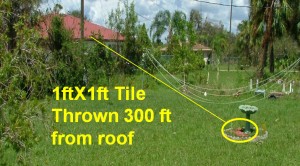
I tend to think of designers as dealing with either wind or seismic design, yet the Southeast region contains everything that Mother Nature can throw at a building. This includes high seismic areas along the New Madrid and Charleston faults, hurricanes along the Gulf and Eastern coast, and tornado prone areas throughout the South and Midwest. Sam participated in the investigation and was a co-author of the Damage Study and Future Direction for Structural Design Following the Tuscaloosa Tornado of 2011, which gives him some very recent experience with tornado damage. This week, Sam will be discussing a topic not often thought about by structural engineers – the importance of proper roof tile attachments. Here is Sam’s post:
According to recent studies by the Insurance Institute for Business Home and Safety (IBHS), roof coverings are a major problem area in wind-related events and account for 95% plus of home claims after the event.
Preventing roof tiles from becoming wind-borne debris in high wind regions is essential for several reasons, and may also have an effect on insurance premiums. In this post, I’d like to discuss two reasons that roof tiles can pose a significant threat to life safety:

- Many designers rely on the weight of roof tiles to reduce the overall wind uplift effects on the structure. If the roof tiles do not remain in place during the wind event, then an under-designed wind uplift restraint system can exist.
- Roof tiles can essentially become missiles in a wind event, damaging nearby property and creating a significant and direct risk to public safety.
A Complete Load Path
Section 1604.4 in the International Building Code (IBC) requires a complete load path from point of origin to the load-resisting elements. For wind conditions, where does the wind uplift load path begin?
The roof tiles to roof decking attachment!
Designers often rely on the benefit of the weight of the roof tile to reduce uplift loads on the structure, but rarely (if ever) design or specify these connections. The code allows a portion of the roof dead load to be used to reduce uplift loads on the structure (60% of the typical 25 psf of dead load for tile roofs), so keeping it in place during a wind event is critical. Consequently, the attachment of the tile should also be included in the design by the project designer of record, or it should not be used to reduce uplift loads. This consideration is clarified in section 1605.3.2, “…only two-thirds of the dead load likely to be in place during a wind event shall be used…”.
Roof Systems
The design and construction of roof systems is addressed in section 1609.5 of the 2012 IBC. Section 1609.5.3 provides a method for determining wind loads on rigid tiles, as well as the minimum detailing and design requirements. In this section, equation 16-33 provides a means for calculating the minimum aerodynamic uplift moment, Ma (ft-lbf), acting to raise the tail of the tile.
Ma = qhCLbLLa[1.0 – GCp]

The use of this challenging equation should only be performed by a qualified designer and it should not just be left to the installer of a roof system to ensure the roof tiles are properly attached to the roof deck. Fortunately, the Florida Roofing, Sheet Metal and Air Conditioning Contractors Association (FRSA) teamed up with the Tile Roofing Institute to create the Concrete and Clay Roof Tile Installation Manual. The appendix of this document includes simple tables that assist the designer in determining the proper attachment of clay or concrete roof tiles to resist the aerodynamic uplift moment.
Wind-Borne Debris
Improper attachment of roof tile can also create powerful missiles in wind events. These missiles can pose a significant risk to life safety as they become wind-borne, either directly to the public, or through damage to nearby occupied structures, thereby reducing the ability of that structure to remain in place during the event. Both of these reasons make it essential for proper design and detailing of the connection of roof tiles to be incorporated into the design of the building by the project designer of record.



